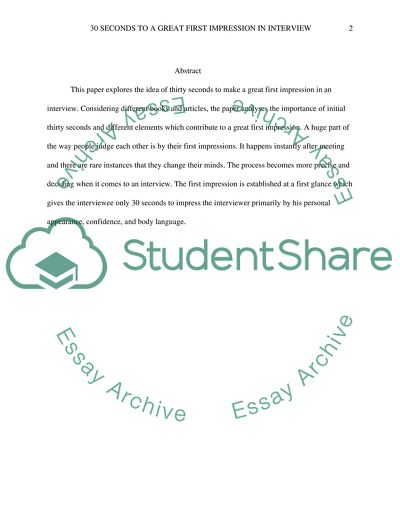Cite this document
(“30 seconds to make a great first impression in an interview Research Paper”, n.d.)
Retrieved from https://studentshare.org/psychology/1425377-30-seconds-to-make-great-impression-in-an-interview
Retrieved from https://studentshare.org/psychology/1425377-30-seconds-to-make-great-impression-in-an-interview
(30 Seconds to Make a Great First Impression in an Interview Research Paper)
https://studentshare.org/psychology/1425377-30-seconds-to-make-great-impression-in-an-interview.
https://studentshare.org/psychology/1425377-30-seconds-to-make-great-impression-in-an-interview.
“30 Seconds to Make a Great First Impression in an Interview Research Paper”, n.d. https://studentshare.org/psychology/1425377-30-seconds-to-make-great-impression-in-an-interview.


